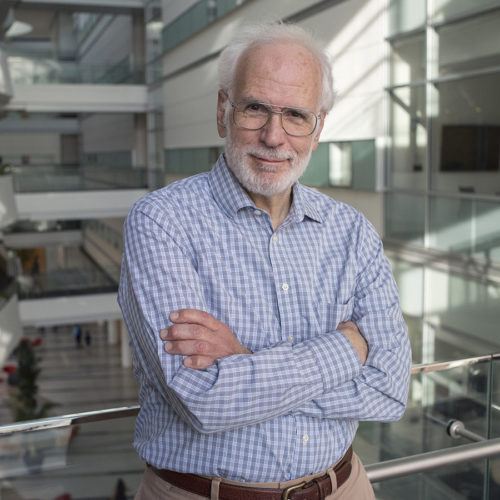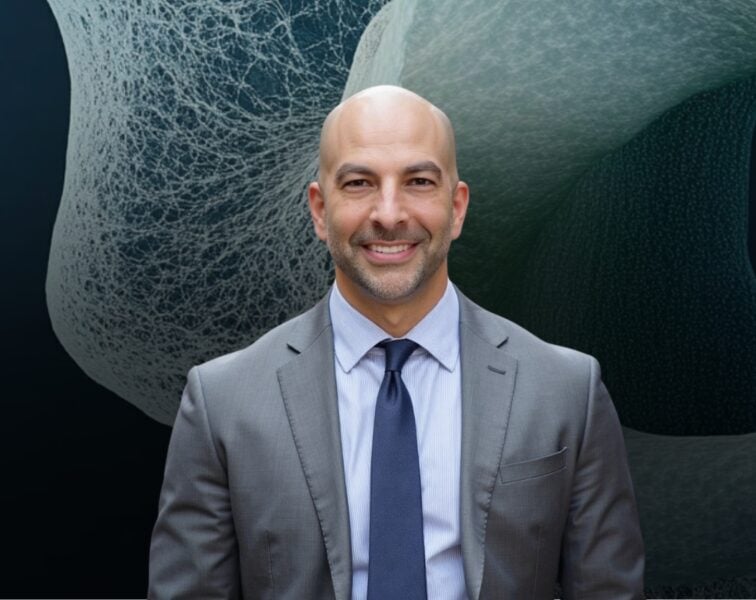Richard Miller is a professor of pathology and the Director of the Center for Aging Research at the University of Michigan. He is one of the architects of the NIA-funded Interventions Testing Programs (ITPs) animal study test protocol. In this episode, Rich goes through the results of the long list of molecules tested by the ITP—including rapamycin, metformin, nicotinamide riboside, an SGLT-2 inhibitor called canagliflozin, and more. Many of the discussed outcomes have had surprising outcomes—both positive and negative findings.
Subscribe on: APPLE PODCASTS | RSS | GOOGLE | OVERCAST | STITCHER
We discuss:
- Rich’s interest in aging, and how Hayflick’s hypothesis skewed aging research (3:45);
- Dispelling the myth that aging can’t be slowed (15:00);
- The Interventions Testing Program—A scientific framework for testing whether drugs extend lifespan in mice (29:00);
- Testing aspirin in the first ITP cohort (38:45);
- Rapamycin: results from ITP studies, dosing considerations, and what it tells us about early- vs. late-life interventions (44:45);
- Acarbose as a potential longevity agent by virtue of its ability to block peak glucose levels (1:07:15);
- Resveratrol: why it received so much attention as a longevity agent, and the takeaways from the negative results of the ITP study (1:15:45);
- The value in negative findings: ITP studies of green tea extract, methylene blue, curcumin, and more (1:24:15);
- 17α-Estradiol: lifespan effects in male mice, and sex-specific effects of different interventions (1:27:00);
- Testing ursolic acid and hydrogen sulfide: rationale and preliminary results (1:33:15);
- Canagliflozin (an SGLT2 inhibitor): exploring the impressive lifespan results in male mice (1:35:45);
- The failure of metformin: reconciling negative results of the ITP with data in human studies (1:42:30);
- Nicotinamide riboside: insights from the negative results of the ITP study (1:48:45);
- The three most important takeaways from the ITP studies (1:55:30);
- Philosophies on studying the aging process: best model organisms, when to start interventions, which questions to ask, and more (1:59:30);
- Seven reasons why pigs can’t fly (2:08:00); and
- More.
Get Peter’s expertise in your inbox 100% free.
Sign up to receive An Introductory Guide to Longevity by Peter Attia, weekly longevity-focused articles, and new podcast announcements.
Rich’s interest in aging, and how Hayflick’s hypothesis skewed aging research [3:45]
Upbringing, education, and interest in aging
- Born in Philadelphia and raised in Cheltenham Township, the northern suburbs of Philadelphia with his parents and two brothers
- He took an interest in science at age 5
- “I decided early on that aging was bad for you. It made people sick and then die. I was kind of against that. And the best way to fight against that was to learn something about aging and to develop ways of slowing the aging process down.”
- Got his MD and Ph.D. Degrees at Yale in the 1970s
Refining his focus on aging
- Rich always wanted to work on aging so his initial Ph.D. project involved somatic cell hybridization
- He wanted to mix together two kinds of cells—one that could divide and one that couldn’t divide—and immortalize the T lymphocytes that couldn’t divide
- But the more he learned about the Hayflick hypothesis and all of that cell senescence stuff, the more convinced he was that it wasn’t going to teach him anything about aging
- He switched focus and became an immunologist in order to study immunology and how aging modified the immune system
- Starting about 1990, he gradually transitioned into focusing on aging more broadly
- Today, he does very little immunology: His focus is now on what is controlling the aging process and using that information to develop interventions
History around division of cells [7:30]
- History of the Hayflick hypothesis and how it skewed aging research
- The phenomenon that Hayflick more or less discovered was that if you take normal, non cancer, human cells and you let them grow in tissue culture, they will divide but only a limited number of times (about 50) and then they will stop
- Hayflick decided that was akin to aging and that he had found a way to study aging in culture — “Now that’s nuts. It’s nothing like aging in the slightest.” says Rich
- But people were really excited by tissue culture and a whole generation of superb cell biologists spent their life investigating the Hayflick system under the illusion that they were studying aging
- About 20 years after this, Rich spoke to Vittorio Defendi, an old colleague of Hayflick:
- On one occasion, Hayflick had been complaining to Defendi that his cells in culture “already stopped growing”
- Defendi (allegedly) told Hayflick in a joking manner, “Maybe they’re just getting old.”
- Hayflick, whose sense of humor is notoriously absent, did not understand he was being joshed
- He thought it was a scientific hypothesis, and after a while, he persuaded himself that it was HIS hypothesis and then that it was the correct hypothesis
- It later became established that the limitation of growth—the Hayflick limit—was actually due to the shortening of telomeres
- This was a very important, and true, finding
- However, people convinced themselves that, because they thought it was like aging, the telomeres were something to do with aging too
- Now a whole new generation of people bought into the Hayflick idea and the telomeres concept as a central cause of the aging process, despite all the evidence to the contrary
⇒ A prime example of how the line of thinking has skewed our thoughts is a recent study from Israel on the anti-aging effect of HBOT:
- This story is being sold as the most rigorous study in the history of humans demonstrating the anti-aging benefits of hyperbaric oxygen
- A group of volunteers were exposed to hyperbaric oxygen and their telomeres lengthened a bit and therefore, many believe, hyperbaric oxygen is the “fountain of youth”
- The problem, of course, is that aging and telomere length are not the same thing
Rich points out:
- It’s entirely possible that hyperbaric oxygen could well have health benefits under certain circumstances — “There’s no evidence that that statement is true, but it’s also not silly.”
- “If you want to prove that hyperbaric conditions, suitable doses, and at suitable time intervals, et cetera, might be good for you, that’s a very plausible idea worth testing. It’s just that you don’t test it by measuring telomeres.”
The exciting part about telomere research:
- The work that Blackburn did is really amazing biology (and worthy of a Nobel Prize), but it doesn’t really explain aging — “And those two statements can co-exist.” says Peter
- Telomere biology is also a critical element in cancer biology — the telomere story is a fundamental advance in our understanding of cancer in people
- And it may also have an interesting sidelight in evolutionary biology (some species, mice, for instance, have extremely long telomeres)
- Vera Gorbunova’s work looks at how different species with different body sizes and lifespans differ in their ways of stopping the cancer process
- So, telomere research may be a fundamental step in our understanding of cancer biology in people and the way in which anti-cancer defenses evolve
- However, “the notion that it’s sort of a shortcut for actually working on aging in my view does not hold up very long”
Dispelling the myth that aging can’t be slowed [15:00]
Rich’s role in starting the ITP (Interventions Testing Program)
- The National Institute on Aging (NIA) has a division of aging biology, which at that time was headed by a visionary guy named Huber Warner about 18 years ago
- Warner commissioned a committee of about 12 of to sit down with him and Nancy Nadon to discuss what the NIA might do to develop a program in which potential interventions were tested directly
- Together with Arlan Richardson, Rich put together what they viewed would be the best way to do this focusing on mice which they presented (successfully) to Warner
⇒ See An aging Interventions Testing Program: study design and interim report
Dispelling the myth that aging can’t be slowed
Around the same time (2002), Rich wrote Extending Life: Scientific Prospects and Political Obstacles
- Rich was asked to give a talk at the law school at the University of Michigan which became the basis
- Rich laid out the basic thesis of the paper, “Look, discussions of anti-aging medicine aren’t silly. The development of an anti-aging strategy is starting to make headway and further work here would be worthwhile.”
- Rich adds, “It’s still an evolving process. We’re not there yet. But 18 years ago, we certainly weren’t even close to there.”
Around that time, Rich attended a Gordon Research Conference on Aging where he got into a disagreement with his friend, George Martin
{end of show notes preview}
Would you like access to extensive show notes and references for this podcast (and more)?
Check out this post to see an example of what the substantial show notes look like. Become a member today to get access.

Richard Miller, M.D., Ph.D.
Richard A. Miller, M.D., Ph.D., is a Professor of Pathology at the University of Michigan. He received the BA degree in 1971 from Haverford College, and MD and PhD degrees from Yale University in 1976-1977. After postdoctoral studies at Harvard and Sloan-Kettering, he began his faculty career at Boston University in 1982 and then moved to his current position at Michigan in 1990.
Dr. Miller has served in a variety of editorial and advisory positions on behalf of the American Federation for Aging Research and the National Institute on Aging, and served as one of the Editors-in-Chief of Aging Cell. He is the recipient of the Nathan Shock Award, the AlliedSignal Award, the Irving Wright Award, an award from the Glenn Foundation, and the Kleemeier Award for aging research. He has been a Senior Scholar of the Ellison Medical Foundation, and is a Fellow of the American Association for the Advancement of Science and a member of the American Association of Physicians. At Michigan, he directs the Paul Glenn Center for Aging Research.
His research program includes ongoing studies of the mechanisms that link stress, nutrients, and hormones to delayed aging in mice, development of new approaches to slow aging and disease through drugs and targeted mutations, and studies of the ways in which cells from long-lived birds, rodents, and primates differ from those of short-lived species.
For fun he sometimes photographs wildlife or landscapes; you can check it out here.



